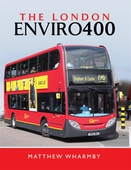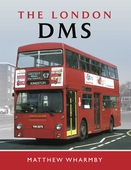
Lägg till önskelistan
London Transport's Last Buses e-bok
Pris
115 kr
The Olympian was Leyland's answer to the competition that was threatening to take custom away from its second-generation OMO double-deck products. Simpler than the London Transportcentric Titan but, unlike that integral model, able to respond to the market by being offered as a chassis for bodying by the bodybuilder of the customer's choice, the Olympian was an immediate success and soon replaced both the Atlantean and Bristol VRT as the standard double-decker of the NBC. It wasn't until 1984...
E-Bok
115 kr
Pris
Förlag
Pen and Sword
Utgiven
15 Februari 2021
Längd
192 sidor
Genrer
Historia & Arkeologi, Fackböcker
Språk
English
Format
epub
Kopieringsskydd
Vattenmärkt
ISBN
9781473869707
The Olympian was Leyland's answer to the competition that was threatening to take custom away from its second-generation OMO double-deck products. Simpler than the London Transportcentric Titan but, unlike that integral model, able to respond to the market by being offered as a chassis for bodying by the bodybuilder of the customer's choice, the Olympian was an immediate success and soon replaced both the Atlantean and Bristol VRT as the standard double-decker of the NBC. It wasn't until 1984 that London Transport itself dabbled with the model, taking three for evaluation alongside trios of contemporary double-deckers.The resulting L class spawned an order for 260 more in 1986, featuring accessibility advancements developed by LT in concert with the Ogle design consultancy, but the rapid changes engulfing the organisation meant that no more were ordered. During the 1990s company ownerships shifted repeatedly as the ethos of competition gave way to the cold reality of big business, an unstable situation which even saw London's bus operations broken up.The L class was split between three new companies, but the backlog of older vehicles to replace once corporate interests released funding ensured the buses up to a further decade in service. Finally, as low-floor buses swept into the capital at the turn of the century, Olympian operation at last declined, and the final examples operated early in 2006.
This profusely illustrated book describes the diversity of liveries, ownerships and deployments that characterised the London Leyland Olympians' two decades of service.







